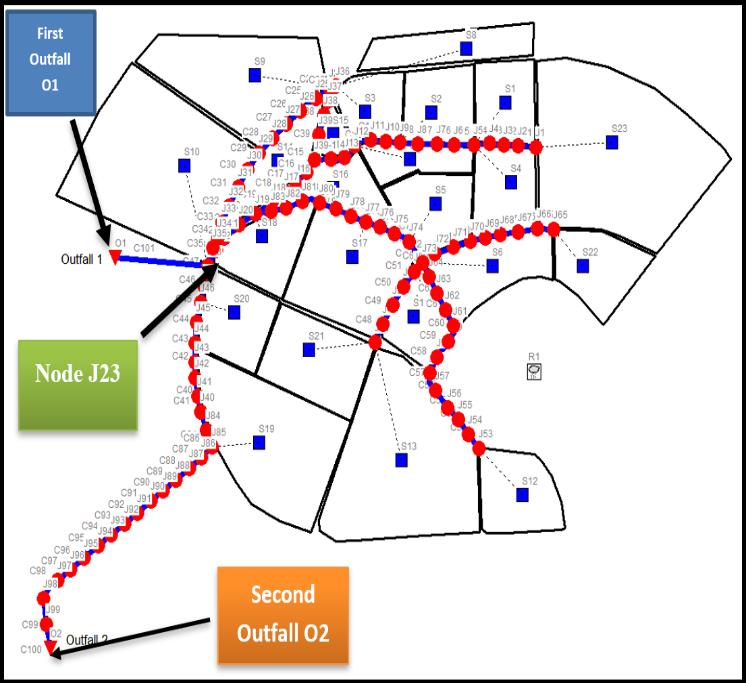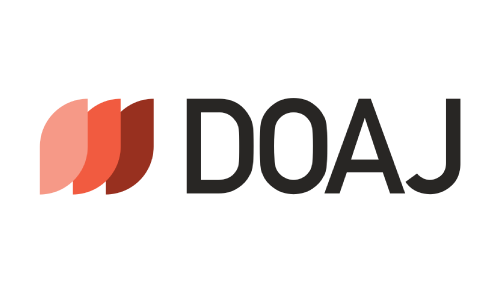Applying the SWMM Software Model for the High Potential Flood-Risk Zone for Limited Catchments in Erbil City Governorate
DOI:
https://doi.org/10.21271/ZJPAS.35.4.05Keywords:
Keywords: Box Drainage Network; SWMM; IDF Curve; Alternating Block Method;Abstract
Every year, the vicinity of the Council of Ministers is frequently inundated. Due to the area's shifting land use and the inadequacy of the existing drainage system to handle the rising drainage loads, KRG decided to build two box sewers (BS). The drainage system in the study area will be evaluated, and the effectiveness of the BS construction in reducing flood amounts in the study area, as well as comparing the capacity of the drainage system before and after the BS construction using EPA SWMM version 5.2. The data used in this study are rain data and drainage network dimensions. Since the rain gauge station at the research area did not directly provide the 2-hour time series rainfall data, it was created using the Alternating Block Method (ABM) by determining a rainfall hyetograph from 5-year, 25-year, and 100-year Intensity-Duration-Frequency (IDF) curves. Following the specification and inputs of all EPA SWMM 5.2 parameters, six simulation scenarios were run based on the before and after adding (BS). Prior to the addition of (BS), the number of flooded nodes for the first three scenarios was (33, 31 and 28), and it was reduced to (25, 22 and 19) nodes. According to the findings, the drainage planning design for the study area is not adequate to handle the drainage load of the area, either now or in the future.
References
AGARWAL, S. & KUMAR, S. 2020. Urban Flood Modeling using SWMM for Historical and Future Extreme Rainfall Events under Climate Change Scenario. Indian Journal of Ecology, 47, 48-53.
ALISAWI, H. A. O. 2020. A sewer overflow mitigation during festival and rainfall periods: case study of Karbala. Applied Water Science, 10, 1-9.
BOOTH, D. B. 1991. Urbanization and the natural drainage system--impacts, solutions, and prognoses.
BUTLER, D. & DAVIES, J. 2011. Urban Drainage, Chapter 7. System component and design. Taylor & Francis.
CHOW, V. T., MAIDMENT, D. R. & MAYS, L. W. 1988. Applied hydrology, New York; London, McGraw-Hill.
DOUGLAS, I., ALAM, K., MAGHENDA, M., MCDONNELL, Y., MCLEAN, L. & CAMPBELL, J. 2008. Unjust waters: climate change, flooding and the urban poor in Africa. Environment and urbanization, 20, 187-205.
HUONG, H. T. L. & PATHIRANA, A. 2013. Urbanization and climate change impacts on future urban flooding in Can Tho city, Vietnam. Hydrology and Earth System Sciences, 17, 379-394.
MOHAMMAD, E. I., MUSTAFA, A. S. & ADHAM, A. 2021. Simulation of Storm Sewer Network Using a Storm Water Man-agement Model (SWMM), Ramadi City as a Case Study. Anbar Journal for Engineering Sciences, 9, 83-89.
PATZ, J. A., CAMPBELL-LENDRUM, D., HOLLOWAY, T. & FOLEY, J. A. 2005. Impact of regional climate change on human health. Nature, 438, 310-317.
ROSSMAN, L. 2015. Storm water management model user’s manual, version 5.1: National Risk Management Laboratory Office of Research and Development US Environmental Protection Agency 26 Martin Luther King Drive Cincinnati. OH.
BEHBAHANI, S.M. 2009. Surface water hydrology. Second edition. Tehran Press. 488 pp.

Downloads
Published
How to Cite
Issue
Section
License
Copyright (c) 2023 Bakhtiyar A. Ali, Dana K. Mawlood

This work is licensed under a Creative Commons Attribution 4.0 International License.













